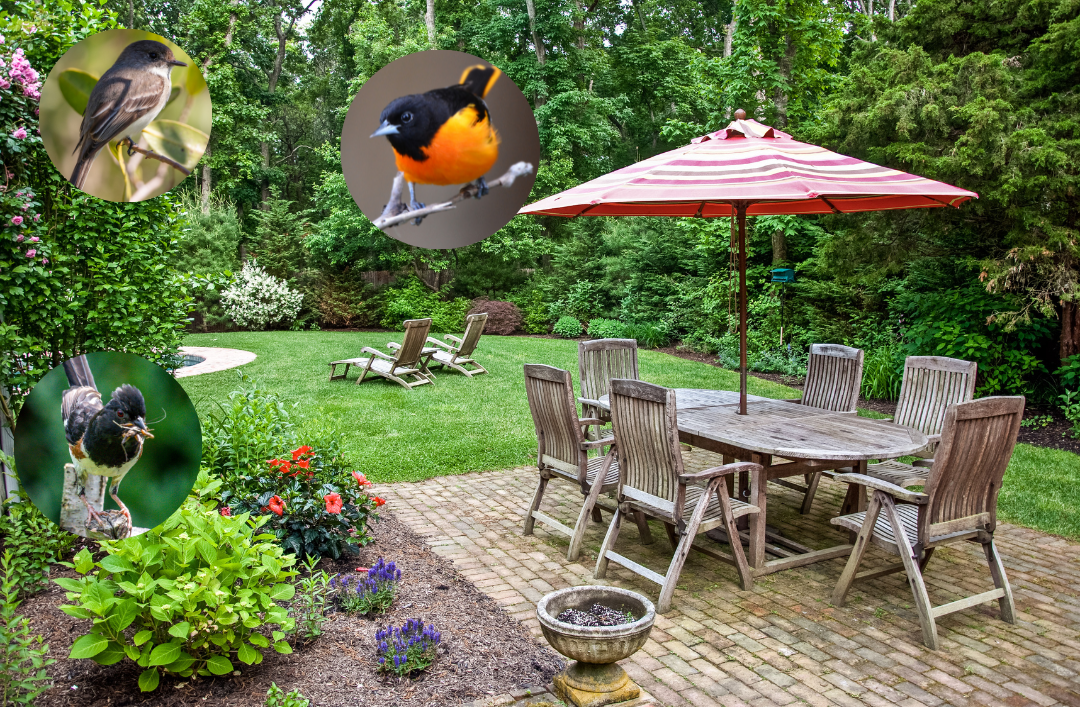Birds bring joy and color to any environment. This is especially true in our gardens and backyards, where they make for entertaining wildlife-viewing. Backyard birds make excellent neighbors. They can feed on pest insects, help us relax with their songs, and provide great practice for birdwatching. Having them around is great, but how do you attract songbirds to your backyard or garden?
In this Outdoor Tips post, you’ll learn the basic principles for making an outdoor space that is attractive to songbirds.
What do birds need in your backyard?
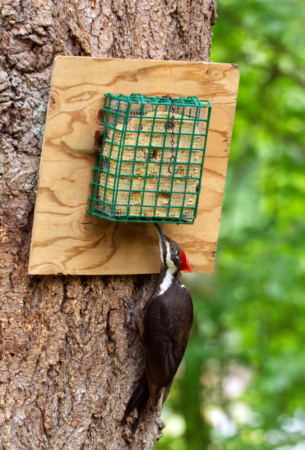
The key to gardening for any kind of wildlife is providing some resource that animals need. Most often, these resources fall into a few basic categories:
- Food resources
- Space for nesting or breeding
- Places to hide or shelter
- Water
- Raw materials for building nests and other structures
Unsurprisingly, nearly all of the actions you might take to attract songbirds to an outdoor space satisfy one of these needs.
Have a water feature

Although we get it piped directly into our homes and available in water fountains all over, water is almost always a scarce resource for land animals. In other words, they’ll be on the lookout for reliable sources in any outdoor space. This is part of why wetlands are always such good places to sit and watch wildlife.
Similarly, you can make your backyard or garden a haven for songbirds by providing water. Birdbaths are the easiest and most basic option for this. They are relatively inexpensive and easy to install. However, since they provide stagnant (still) water that isn’t well-oxygenated, they require some maintenance. You’ll need to clean your bird bath and replace the water at least weekly to keep it safe for birds.
Many bird experts also believe that moving water is more attractive to birds than still water. So, while a fishpond or birdbath might attract birds, a fountain or moving water feature would be even better. For example, University of Georgia ornithologist Richard Hall set up a small, flowing stream in his back yard. His backyard bird haven has become so popular among local songbirds and beautiful migratory species that it has earned its own hashtag on Twitter!
Serve up some chow
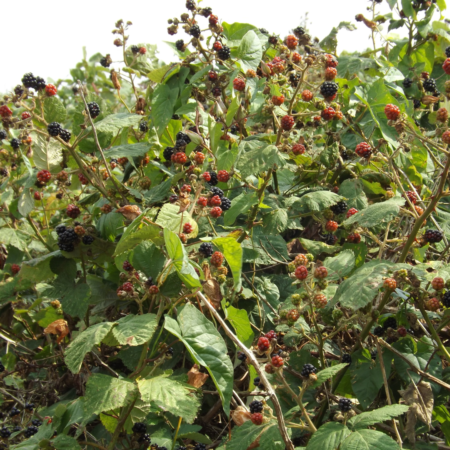
If birds show up in your backyard for a drink, they’ll hang around longer for a bite to eat. Food sources, particularly things like plant seeds, become especially important for birds during the Winter months. However, when insects show up in Spring they can draw quite a crowd. Songbird parents need a massive supply of insects to feed their precocial babies, who can’t feed themselves for several weeks.
Some of the best advice on how to attract songbirds to your backyard is to serve up whatever food they’ll be looking for. Of course, different types of food attract different backyard birds, and there are lots of different options for providing food. Ultimately, which is right for you will depend on your outdoor space and the species you’re looking to attract.
Here are some great options:
- Hummingbird feeders are by far the most effective way to bring hummingbirds to your backyard. Be sure to use a healthy recipe for hummingbird nectar!
- Suet and seed birdfeeders will draw in finches, tits, nuthatches, and woodpeckers.
- Trees and shrubs that grow berries provide great, natural bird food especially in the Summer, Fall, and Winter. Try planting species like hawthorn, raspberry, juniper, holly, cherry, mountain ash, or crabapple. Of course, you’ll want to pick native species that can thrive in your local climate.
- Keep some leaflitter around! “Leaving the leaves” is a great idea for most wildlife. Since many invertebrates like insects and spiders use leaflitter for food and shelter, it provides a great pantry for birds. Many bird species like thrushes, towhees, thrashers, and mockingbirds love to pick through leaflitter and find bugs.
Keep dead trees wherever safe and possible

Dead trees, or as naturalists call them, snags, may look like a waste of space, but they are extremely valuable habitat for a variety of animals. They can provide both food and shelter to many bird species. Woodpeckers famously excavate holes or cavities in the dead parts of trees, which they use for nesting and roosting. They will also peck away at dead wood to access insect larvae living within, an excellent food source.
Once a dead tree has been around for a while, it will often have a number of cavities. This greatly increases its value to wildlife, including songbirds. In fact, many songbirds like to use cavities for nesting and roosting, but they aren’t able to make those holes themselves. Thus, a dead tree full of holes can be an apartment complex!
For example, I once found a dead Ponderosa pine (Pinus ponderosa) in a park in Western Montana that was home to a pair of American kestrels, mountain bluebirds, Lewis’ woodpeckers, and pygmy nuthatches!
Have some dense and thorny cover
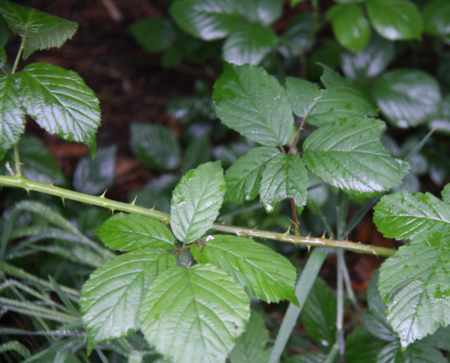
Although they might not be the most attractive garden feature, brambles and other spiny, thorny plants are very useful for birds. Specifically, this type of foreboding, shrubby growth wards off mammalian predators and can make an excellent nesting site. Plants like raspberries, blackberries, roses, and hawthorns are great at providing a prickly refuge.
Keep in mind, you don’t have to make these somewhat disagreeable plants the mainstay of your garden. In fact, they make excellent hedgerows and garden edges, and can provide a protective barrier for your yard.
Provide nesting materials

Birds need a variety of different materials for building nests. Common nesting materials include:
- Mud
- Grasses
- Plant fibers
- Twigs and small branches
- Pieces of bark
- Spider web
- Lichens and mosses
By offering up a variety of different vegetation, and letting certain areas grow a little “wild”, you’ll give birds what they need to make a good home for their young. By offering a water source as mentioned above, you also enable some birds to make their own mud! With these tools at hand, your backyard songbirds will be able to set up shop and serenade you for weeks on end.
Have less lawn
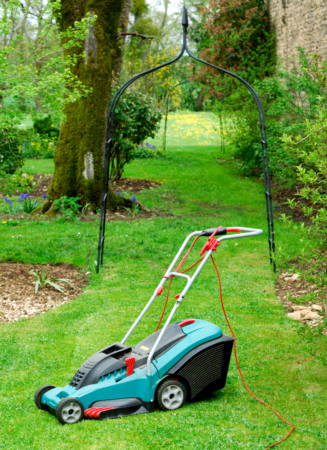
Pretty as they are, trimmed, manicured lawns are terrible for wildlife, including songbirds. Although the occasional robin might hop around grabbing earthworms, the chemicals needed to maintain a lawn make them inhospitable. Furthermore, their lack of shelter and hiding places makes them dicey places for birds to spend their time. Lawns make any bird into, well, a sitting duck, and they’d rather not be such easy pickings for predators. Can you blame them?
Accordingly, it’s best to minimize the amount of lawn in your backyard or garden if you want to attract songbirds. You can productively replace it with herbs, veggies, or wildflowers, which will not only provide better cover, but will attract food insects as well.
Take care of big, native trees
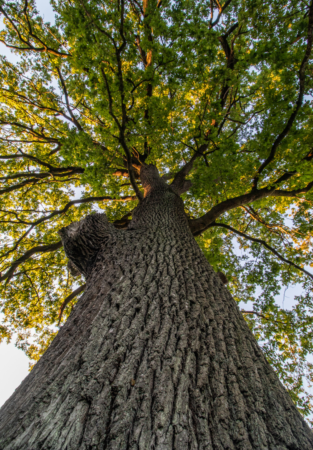
In all of my experience surveying peoples’ backyards and gardens for birds, one feature stands out as a major advantage. Large, native trees are like bird magnets! For example, in New England, tall oaks and elms bring in an incredible variety of warblers and other caterpillar-eating migratory birds each Spring. While smaller trees from introduced species sat neglected, I’ve watched oaks absolutely covered by a dazzling variety of migrant songbirds fresh in from Central and South America.
These trees provide abundant hiding places and food sources for insects, especially moths, resulting in a smorgasbord for birds. The larger the tree, the higher and more complex the canopy, and that gives more habitat for different species to forage in the same place.
The bottom line? If you’ve got old, native trees in your garden, leave them there, and take good care of them!
Provide hiding places
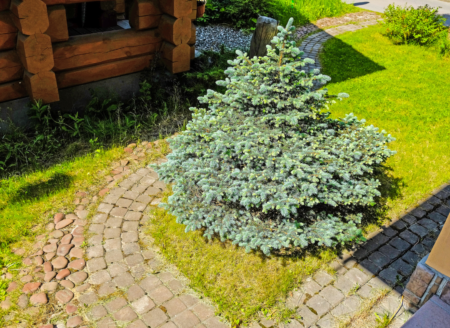
Finally, I can’t stress enough how much songbirds like a place to hide. Whether this is a space for roosting, or for ducking away when predators like hawks are near, hiding spaces are crucial. Some of the best hiding places are thorny shrubs like I mentioned above. However, birds can also hide in things like viburnum, holly, and dogwood, or any other thick, leafy shrubs.
Evergreen shrubs are particularly useful to help birds conceal themselves in Winter. In terms of placement, it’s best to have these “shelter shrubs” (as I like to call them!) near a point of interest. That is, within 20 feet (~7m) of a birdfeeder or birdbath. If you add this one extra feature, you could see a big increase in visitors to your birdfeeders.
Thanks for reading about how to attract songbirds to your backyard!
What’s the coolest songbird you’ve spotted in your backyard or garden this year? Do you have any other tips on how to attract songbirds? Let us know in the comments! If you’ve got additional advice or requests for Outdoor Tips posts, please drop us a line using the Contact page, or connect with us on Social Media.

